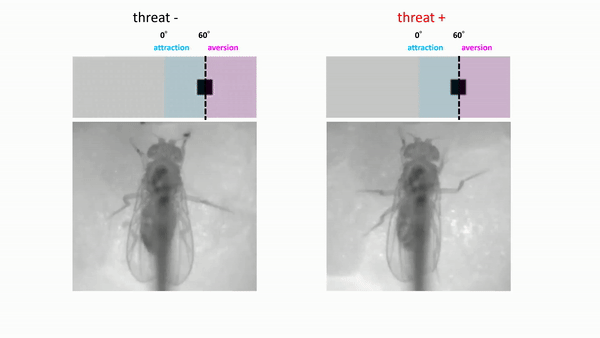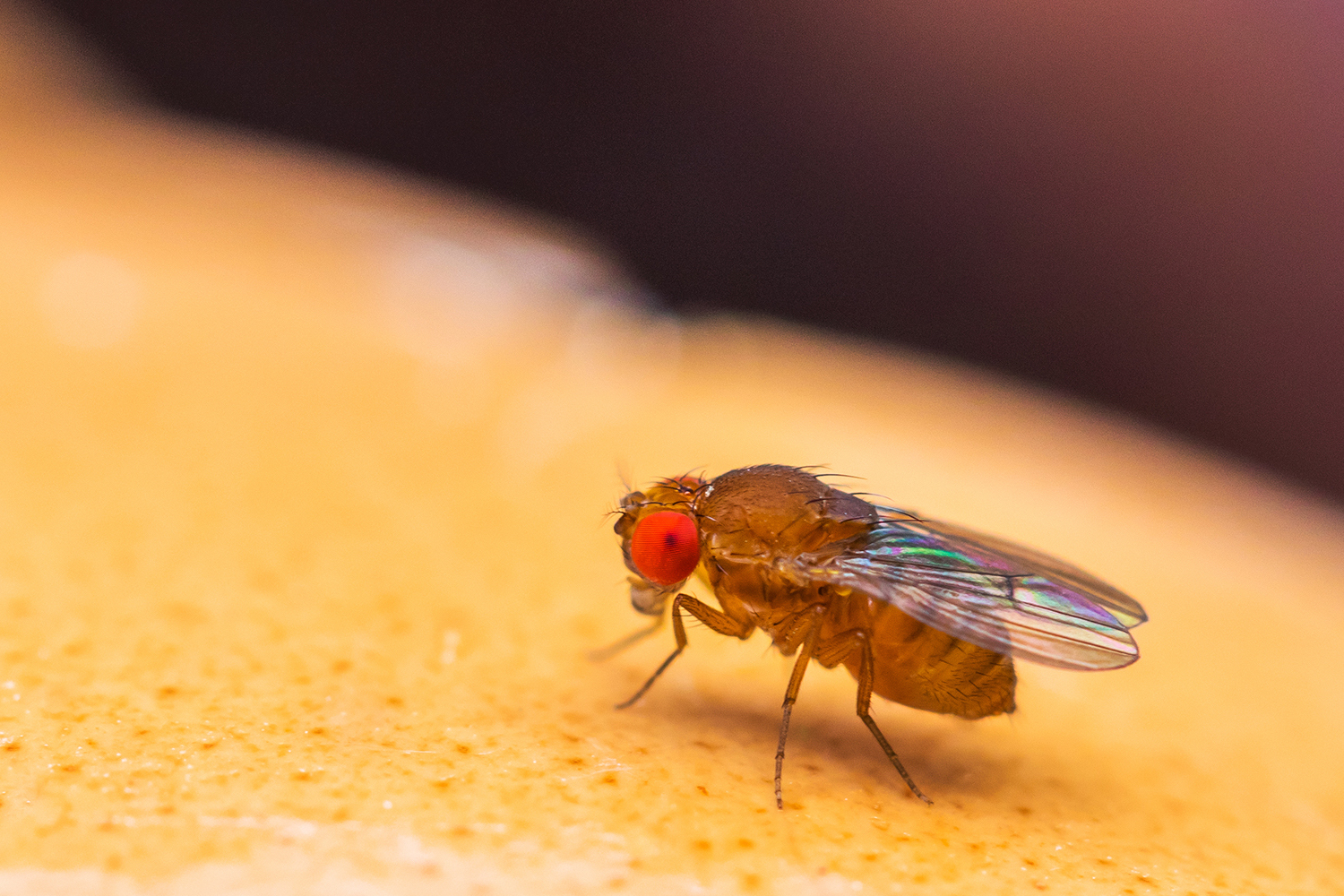Fear is in the eye of the beholder A cluster of neurons in the brains of fruit flies has been found to control visual aversion to scary objects Research news


Don't look now. ©Envato Elements
Averting our eyes from things that scare us may be due to a specific cluster of neurons in a visual region of the brain, according to new research at the University of Tokyo. Researchers found that in fruit fly brains, these neurons release a chemical called tachykinin which appears to control the fly’s movement to avoid facing a potential threat. Fruit fly brains can offer a useful analogy for larger mammals, so this research may help us better understand our own human reactions to scary situations and phobias. Next, the team want to find out how these neurons fit into the wider circuitry of the brain so they can ultimately map out how fear controls vision.
Do you cover your eyes during horror movies? Or perhaps the sight of a spider makes you turn and run? Avoiding looking at things which scare us is a common experience, for humans and animals. But what actually makes us avert our gaze from the things we fear? Researchers have found that it may be due to a group of neurons in the brain which regulates vision when feeling afraid.
“We discovered a neuronal mechanism by which fear regulates visual aversion in the brains of

Visual fear aversion. Calm flies wouldn’t show a change in behavior in response to a visual object, but fearful flies would run away from it.©2023, Tsuji et al.
The team used puffs of air to simulate a physical threat and found that the flies’ walking speed increased after being puffed at. The flies also would choose a puff-free route if offered, showing that they perceived the puffs as a threat (or at least preferred to avoid them). Next the researchers placed a small black object, roughly the size of a spider, 60 degrees to the right or left of the fly. On its own the object didn’t cause a change in behavior, but when placed following puffs of air, the flies avoided looking at the object and moved so that it was positioned behind them.
To understand the molecular mechanism underlying this aversion behavior, the team then used mutated flies in which they altered the activity of certain neurons. While the mutated flies kept their visual and motor functions, and would still avoid the air puffs, they did not respond in the same fearful manner to visually avoid the object.
“This suggested that the cluster of neurons which releases the chemical tachykinin was necessary for activating visual aversion,” said Tsuji. “When monitoring the flies’ neuronal activity, we were surprised to find that it occurred through an oscillatory pattern, i.e., the activity went up and down similar to a wave. Neurons typically function by just increasing their activity levels, and reports of oscillating activity are particularly rare in fruit flies because up until recently the technology to detect this at such a small and fast scale didn’t exist.”

Fruit fly. The sophisticated vision of fruit flies has been well studied, and some aspects of it can be used as a parallel for larger mammals. Flies are also known to experience a threat-induced internal state, which can cause them to freeze, stop eating, run or jump. ©Envato Elements
By giving the flies genetically encoded calcium indicators, the researchers could make the flies’ neurons shine brightly when activated. Thanks to the latest imaging techniques, they then saw the changing, wavelike pattern of light being emitted, which was previously averaged out and missed.
Next, the team wants to figure out how these neurons fit into the broader circuitry of the brain. Although the neurons exist in a known visual region of the brain, the researchers do not yet know from where the neurons are receiving inputs and to where they are transmitting them, to regulate visual escape from objects perceived as dangerous.
“Our next goal is to uncover how visual information is transmitted within the brain, so that we can ultimately draw a complete circuit diagram of how fear regulates vision,” said Tsuji. “One day, our discovery might perhaps provide a clue to help with the treatment of psychiatric disorders stemming from exaggerated fear, such as anxiety disorders and phobias.”
Papers
Masato Tsuji, Yuto Nishizuka, Kazuo Emoto, "Threat gates visual aversion via theta activity in Tachykinergic neurons," Nature Communications: July 13, 2023, doi:10.1038/s41467-023-39667-z .
Link (Publication )
)





